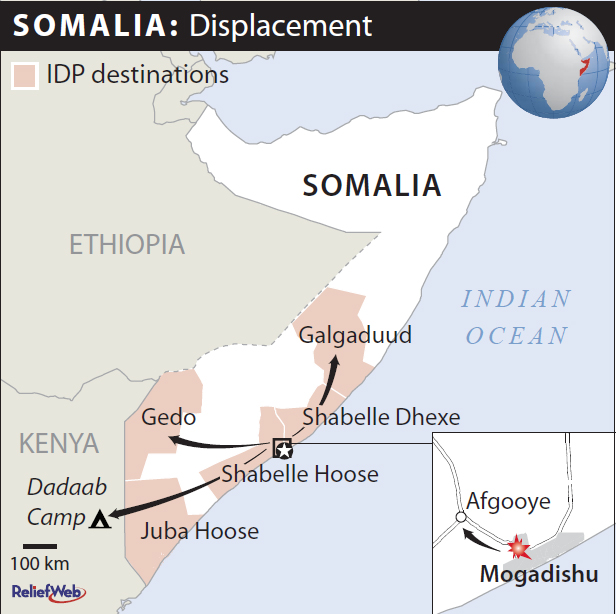
I find it rather hard to follow the Somalia crisis in mainstream international media. I guess it has something to do with the killings of journalists in the country.
According to the International Federation of Journalists (IFJ), six reporters have been killed there since the beginning of the year. They say it makes Somalia the most dangerous country for journalists right now.
Frustrated at my regular news providers, I set out looking for up-to-date web-based information on the crisis.
Here’s a selection of the websites I came across, with direct links to the relevant page on Somalia:
- ReliefWeb: Great database with all kinds of resources
- Reuters AlertNet: Raw Reuters reports on the Somalia crisis, plus some interesting links, statistics and contacts
- AllAfrica.com: Website aggregating articles from African media sources (don’t be put off by the look of it – the content is very professional)
- Crisis Watch, by International Crisis Group: Monthly analytical updates on crisis regions, including Somalia
- UN Office for the Coordination of Humanitarian Affairs (OCHA): Very useful resources including weekly situation reports and a comprehensive list of contacts
- Integrated Regional Information Networks (IRIN): A humanitarian news and analysis service supported by OCHA
For more in-depth resources on Somalia, also check out the ISN’s content holdings on the topic.
I think it’s worth following the Somalia crisis very closely. At the beginning of the year, observers seemed pretty optimistic about the Sheikh Sharif Ahmed government and the withdrawal of Ethiopian troops. But now it’s become clear that the government can’t do it alone.
While the international community tries to come up with a form of intervention that hasn’t failed yet, we should keep an eye open. Somalia is not just about a civil war in a poor southern failed state. It has a destabilizing effect on the whole region and – through the piracy issue – even on one of the most important global trade routes.

